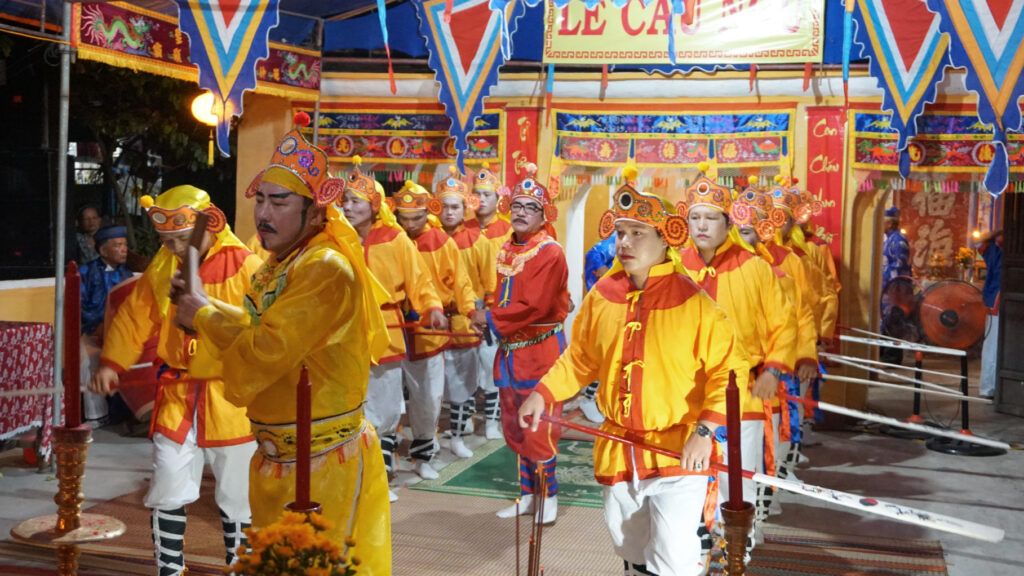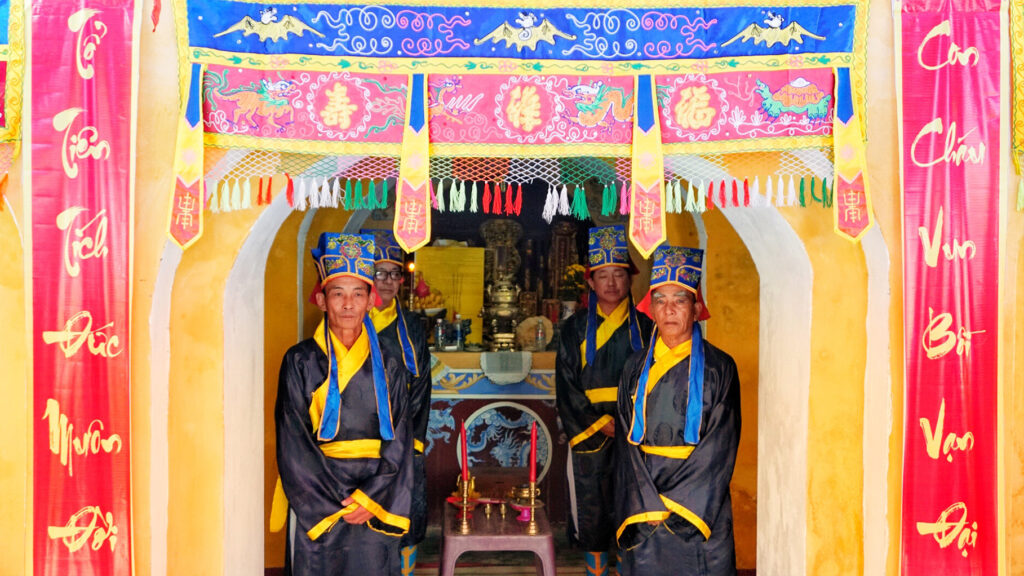Ba Trao singing is a composite art form and a unique ritual performance closely associated with the Cau Ngu Festival and the whale worship tradition of fishermen in the coastal areas of Da Nang City.
Throughout their history of settlement and development, the coastal residents of Da Nang City have created a rich body of intangible cultural heritage imbued with the essence of the sea, harmonizing with natural and social environments. Among these, Ba Trao singing has become a cultural expression, while the Cau Ngu (Whale Worship) Festival serves as a stage for the people to honor and celebrate this distinctive maritime culture.

BA TRAO SINGING – A FOLK ART FORM DEEPLY ROOTED IN COASTAL BELIEFS
The name “Ba Trao” comes from two Vietnamese words: “Bả” meaning to hold firmly, and “Trạo” meaning oar. Hence, “Ba Trao” can be understood as singing while rowing steadily — a performance that blends rhythmic rowing movements with singing and dance.
Beyond a folk activity, Ba Trao singing is a composite art form that skillfully fuses folk dance, classical opera (Tuong), chants, folk songs, and ritual practices. It carries deep spiritual and religious significance, reflecting the worldview and beliefs of the Central Coast people — especially the whale worship tradition, in which “Ca Ong” (the Whale God) is revered as a divine protector of fishermen during their voyages at sea.
The songs of Ba Trao singing praise the sacred Whale God, celebrate the abundance of the sea, and vividly depict the hardships and hopes of fishermen braving the open ocean. Through every drumbeat and chant, one can feel the heartfelt longing for peace and prosperity, and the courage, optimism, and unity of the coastal people — always turning toward calm seas and a flourishing life.
A typical Ba Trao singing troupe includes:
- A Bow Leader (Tổng mũi) at the front, guiding the “boat” and using wooden clappers to lead the performance;
- A Midship Leader (Tổng khoang), holding a fishing rod or bucket, symbolizing labor and vigilance;
- A Stern Leader (Tổng lái) at the rear, steering with a pair of oars to keep the symbolic boat on course;
- Along with 10–16 performers known as “Con Trao”, always an even number to represent harmony and balance in fishermen’s beliefs.
DISTINCTIVE CULTURAL VALUES
From the lens of folk art, Ba Trao singing is a valuable repository of the customs, beliefs, and performance traditions of Vietnam’s Central Coast communities. Each melody, gesture, and drum rhythm embodies the optimism, passion for the sea, and enduring faith of the people who live by it.
The lyrics of Ba Trao singing carry deep philosophical and humanistic messages — like “oral covenants” passed down through generations. They express gratitude toward nature and ancestors, and highlight moral virtues such as “drinking water, remember its source” (a Vietnamese idiom for gratitude), as well as solidarity and resilience. Therefore, Ba Trao singing is not only a musical heritage but also a spiritual heritage, deserving preservation and promotion as an essential part of Da Nang’s cultural identity today.


CULTURAL EXPERIENCES AND COMMUNITY ENGAGEMENT
Today, beyond the traditional Cau Ngu Festival, Ba Trao singing is featured in many cultural and tourism events across Da Nang City. It has also been adapted into stage performances and community shows that introduce this maritime art to wider audiences.
Some travel agencies have developed interactive Ba Trao singing experiences, where visitors can learn basic movements and melodies, then perform aboard river cruises amidst a scenic waterfront setting. This hands-on experience allows tourists to deeply appreciate the maritime culture and spiritual life of Da Nang’s fishermen, while bringing local folk heritage closer to the global community.
Ba Trao singing was recognized by the Ministry of Culture, Sports and Tourism as a National Intangible Cultural Heritage under Decision No. 3084/QĐ-BVHTTDL dated September 9, 2013.
DANANG TOURISM PROMOTION CENTER